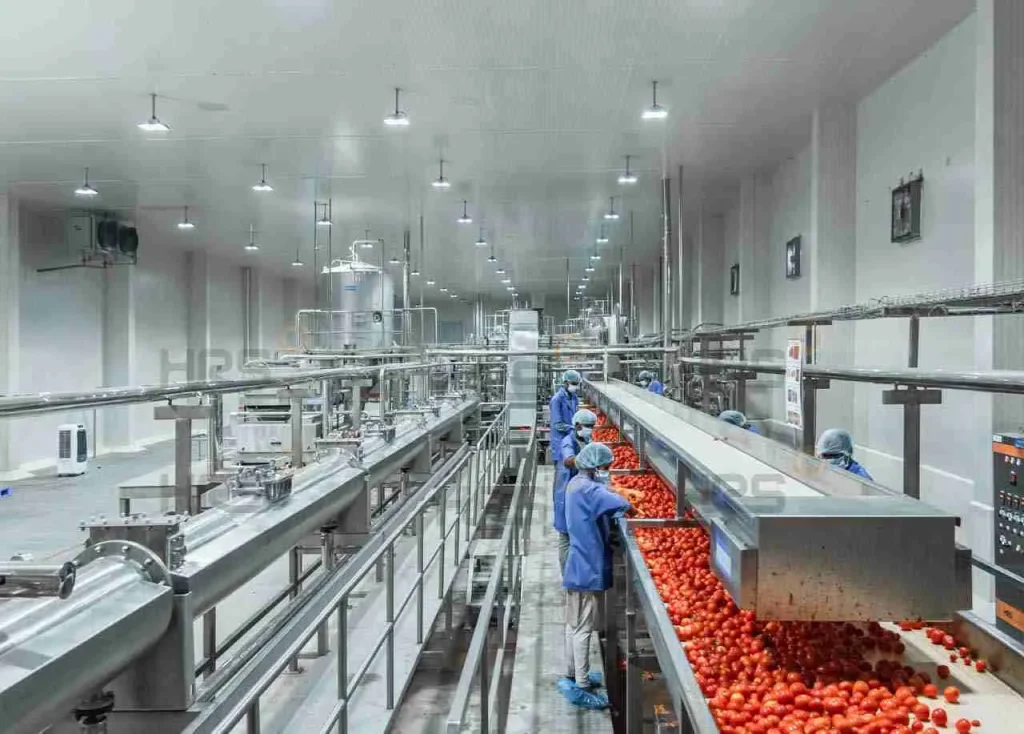
Setting Up a Tomato Processing Plant: How Tomato Processing Equipment Supports the Production of Tomato Paste, Puree, and Tomato Sauce
The global demand for tomato-based products continues to grow, driven by their essential use in a wide range of cuisines and packaged foods. Tomato paste, puree, and tomato sauce are staples in homes and food industries alike, forming the backbone of countless dishes, condiments, and ready-to-eat meals. For entrepreneurs and manufacturers looking to tap into this market, setting up a tomato processing plant is a lucrati ve opportunity. A successful operation, however, relies heavily on the right selection of tomato processing machines and plant layout, beginning with essential equipment like the receiving hopper and moving through to sophisticated pasteurization systems.
This article explores how tomato processing equipment supports the transformation of fresh tomatoes into paste, puree, and sauce—efficiently, safely, and at scale.
Understanding Tomato-Based Product Categories
Before diving into the equipment needed, it’s important to distinguish between the three major product types:
Tomato Paste: Highly concentrated form with most of the water removed, typically used as a base in sauces or commercial cooking.
Tomato Puree: Thicker than juice but less concentrated than paste; often used in soups and stews.
Tomato Sauce: A seasoned, ready-to-eat product that may include spices, herbs, sugar, or vinegar, depending on the formulation.
Despite these differences, all three products begin with the same raw material—fresh tomatoes—and share a common foundation of processing steps.
Step-by-Step: Tomato Processing Equipment in Action
1. Receiving Hopper
The journey starts with bulk tomatoes being delivered to the plant. A receiving hopper is used to accept large quantities of tomatoes and feed them into the production line at a controlled rate. This piece of equipment acts as a buffer between incoming raw materials and downstream operations, reducing manual handling and ensuring continuous flow.
Many receiving hoppers are equipped with water flumes or elevators to move tomatoes to the washing station while also performing an initial rinse to remove surface dirt and debris.
2. Washing and Sorting
After entering the line via the receiving hopper, tomatoes are washed using bubble washers or brush washing systems. These machines remove soil, pesticide residues, and unwanted materials. The tomatoes are then sorted—manually or using optical sorting machines—to eliminate spoiled or damaged produce, ensuring only quality fruit continues.
3. Crushing and Pulping
Next, tomatoes are crushed to release juice and pulp. A tomato processing machine equipped with a pulper separates the juice and pulp from seeds and skin using centrifugal force or fine mesh screens. This stage is essential for producing a smooth base product.
Advanced machines can handle both hot-break and cold-break methods:
Hot-break (heating tomatoes to 85–95°C immediately after crushing) is used for paste and puree to preserve pectin, resulting in thicker consistency.
Cold-break (crushing tomatoes at lower temperatures) retains a fresher taste and is often used in juice production.
4. Preheating and Enzyme Inactivation
In hot-break processing, a preheater is used to deactivate enzymes that could otherwise cause separation and spoilage in the final product. This step also helps prepare the pulp for further concentration.
5. Evaporation (Concentration)
To make tomato paste or thicker puree, the tomato juice must undergo water removal through vacuum evaporation. Multiple-effect evaporators are commonly used to reduce water content while retaining flavor and color. The result is a dense concentrate with solid content ranging from 28–36 Brix for double or triple concentrate tomato paste.
6. Mixing and Cooking (For Tomato Sauce)
For tomato sauce, the concentrate is moved to a mixing kettle where additional ingredients—salt, sugar, vinegar, garlic, herbs, or starch—are blended in. The mixture is cooked to the desired consistency and flavor. Cooking also serves to sterilize the product, making it shelf-stable.
7. Homogenization (Optional)
To ensure uniform texture, especially in sauces and some purees, homogenizers are used to break down remaining particles and achieve a smooth, consistent viscosity.
8. Pasteurization or Sterilization
Paste, puree, and sauce must be thermally treated before packaging. Plate or tubular pasteurizers heat the product to kill bacteria and inactivate enzymes. For commercial shelf-stable paste, ultra-high temperature (UHT) sterilization may be used.
9. Filling and Packaging
A variety of filling machines are available depending on packaging type—cans, glass jars, pouches, or plastic bottles. The filled containers are then sealed and may pass through a hot water bath or steam tunnel to ensure vacuum sealing.
For tomato paste in aseptic bags, aseptic fillers are used under sterile conditions to extend product shelf life without preservatives.
Key Benefits of Using the Right Tomato Processing Equipment
Consistent Product Quality
Advanced tomato processing machines ensure uniformity in texture, color, and concentration, crucial for brand reputation and customer satisfaction.
Reduced Waste and Higher Yields
Efficient pulping and evaporating machines extract more usable product from every kilogram of tomatoes, minimizing waste and maximizing profits.
Scalability and Flexibility
Whether producing 0.5 tons or 20 tons per hour, modern equipment can be customized for different volumes and product types.
Food Safety Compliance
High-quality machinery made from food-grade stainless steel helps meet global food safety standards like HACCP and ISO 22000.
Final Thoughts
Setting up a tomato processing plant requires more than just raw materials and a recipe—it requires well-integrated equipment and a smart production layout. From the receiving hopper that accepts fresh produce to the tomato processing machine that transforms it into puree, paste, or sauce, each step relies on precision machinery to maintain product quality, food safety, and efficiency.
With the right equipment, manufacturers can streamline operations, reduce waste, and produce high-demand products that appeal to both domestic and international markets. Investing in modern tomato processing technology is a step toward profitable, sustainable food production.





